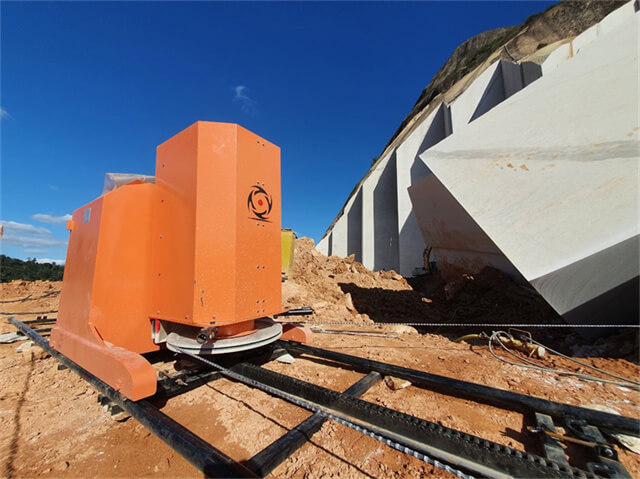Author:Huada Quarrying Machine FROM:Stone quarry machine manufacturer TIME:2024-11-18
Wire saw machines are widely used in various industries for cutting hard materials such as stone, metal, and concrete. While they offer precision and efficiency, the operation of these machines also poses significant safety risks. To minimize accidents and injuries, it is crucial to implement comprehensive safety precautions. This article will provide a detailed overview of essential safety measures when using a wire saw machine, ensuring operators can work safely and effectively.

Before employing any safety precautions, it is essential to understand the potential hazards associated with wire saw machines. These machines operate with a high-speed wire that can cause severe injuries if not handled properly. Risks include cuts, lacerations, exposure to flying debris, and electrical hazards. A thorough understanding of these risks will help in creating an effective safety plan.
The use of appropriate personal protective equipment (PPE) is critical in safeguarding operators from injuries. Essential PPE includes safety goggles to protect the eyes from flying particles, gloves to prevent cuts, and hearing protection to reduce noise exposure. Additionally, wearing steel-toed boots can protect the feet from heavy objects. It is vital for operators to wear the correct PPE at all times during machine operation.

Regular inspection and maintenance of the wire saw machine are vital for safe operation. Before each use, operators should check the machine for any signs of wear or damage. Components such as the wire, pulleys, and electrical connections should be examined to ensure they are in good condition. Scheduled maintenance should be performed according to the manufacturer’s guidelines, which helps prevent malfunctions that could lead to accidents.
Training is a cornerstone of safety in any workplace. Operators must receive comprehensive training on how to use the wire saw machine correctly. This training should cover machine operation, safety protocols, and emergency procedures. Additionally, operators should be familiar with the specific model they are using, as different machines may have varying features and safety requirements. Continuous education and refresher courses can also enhance operator skills and awareness.
Establishing and following safe operating procedures is crucial for minimizing accidents. Operators should always adhere to the manufacturer’s instructions regarding machine settings and operation techniques. It is important to avoid distractions while operating the machine and to maintain focus on the task. Operators should also ensure that the work area is clear of unnecessary personnel and obstacles before starting the machine.
No matter how many precautions are taken, emergencies can still occur. Therefore, having a well-defined emergency plan is essential. Operators should know the location of emergency shut-off switches and how to use them effectively. First aid kits should be readily accessible, and staff should be trained in basic first aid procedures. Regular drills can help ensure everyone knows how to respond in case of an emergency.

The working environment plays a significant role in safety. Adequate lighting is essential for operators to see clearly and avoid mistakes. Poorly lit areas can lead to accidents due to misjudgment of distances or obstructions. Additionally, proper ventilation is necessary to remove dust and fumes generated during cutting processes. A clean and well-ventilated workspace reduces the risk of respiratory issues and maintains overall safety.
Clear communication and safety signage are vital components of a safe working environment. Signs indicating hazards, required PPE, and emergency procedures should be prominently displayed. Operators should also establish a system for communicating potential hazards or issues that arise during operation. Encouraging a culture of safety where workers feel comfortable reporting concerns can significantly enhance overall workplace safety.
In conclusion, the use of wire saw machines involves inherent risks that can be mitigated through diligent safety precautions. From wearing appropriate PPE to conducting regular maintenance and ensuring proper training, each step contributes to a safer working environment. By understanding the risks and implementing these safety measures, operators can perform their tasks more effectively and with greater confidence. Safety should always be a priority in any industrial setting, particularly when operating potentially dangerous machinery like wire saws.